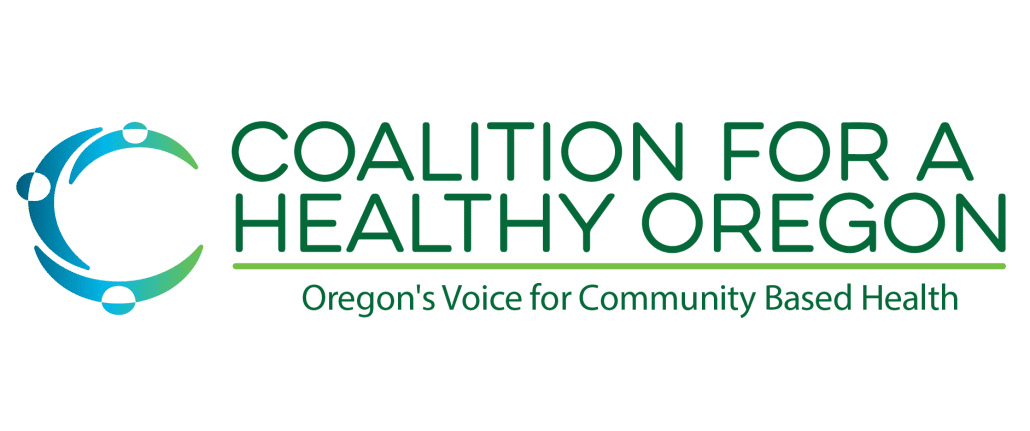CCOs Score High Marks in State Health Metrics Annual Report
August 8, 2024
ANNUAL REPORT RELEASE:
Coordinated Care Organizations Score High Marks in OHA Health Improvement Metrics
Coalition for Healthy Oregon (COHO) member coordinated care organizations (CCOs) helped improve the health of its tens of thousands Medicaid members this past year as demonstrated by data released by the Oregon Health Authority (OHA) on Wednesday, August 7, 2024.
Collectively, the CCOs met or exceeded targeted improvement goals in over 70% of the health metrics established for the year by the OHA’s Metrics & Scoring Committee. These metrics are aimed at preventive care and intervention which translates into mitigating the need for future medical procedures, controlling costs while improving both individual and community health.
Improvement targets are established for each CCO in various categories from baselines established in the previous year. The metrics goals and results demonstrate once again the value of community-based health care delivery, as CCOs can respond quickly to emerging health needs and provide transparency and accountability to the public with measurable outcomes.
Some of the highlights from this year’s results include:
Umpqua Health Alliance’s focus on cigarette smoking prevalence was one of many performance highlights for the Douglas County CCO, exceeding targeted intervention by 13%. Addressing depression risks was another prime goal this year and Umpqua Health Alliance also exceeded the target in this area during the reporting year.
“This achievement emphasizes the outstanding dedication of our provider network in delivering quality care to our members,” said Brent Eichman, CEO of Umpqua Health Alliance. “These efforts directly contribute to improving the health and wellbeing of Douglas County.”
Advanced Health, headquartered in Coos Bay, exceeded targets in multiple areas including almost doubling the target goal for depression screening while also demonstrating strong improvement in childhood dental care and treatment and prenatal and postpartum care. Childhood dental service utilization exceeded targets in both the 1-5 and the 6-14 age groups by double digits.
AllCare, based in Grants Pass, scored extraordinary gains in substance abuse intervention and treatment referral, exceeding the improvement target by 19%. The CCO also delivered double digit gains in child dental care with the 1-5 years of age cohort. Child and adolescent well-care visits were also an emphasis this year, with Allcare exceeding baseline targets.
Fostering a healthier community in pediatric care was identified as a driver in improving the overall health of members now and in the future for Yamhill Community Care. The pediatric-facing collective measures, including well-child visits, immunization, and assessments for Children in DHS custody, outperformed state averages.
“We are pleased that the pediatric-facing collective measures surpassed our improvement targets,” said Seamus McCarthy, CEO at Yamhill Community Care. “This was important as we know that giving children a healthy start will lead to fewer health problems in the future.”
Preventive Dental Care for children ages 1-5 is another area of focus identified by the CCO to see improvement. “We are pleased that these efforts have dramatically improved over the last year, not only meeting our metric, but exceeding that goal by almost 14%,” he added.
The CCO identified and is refining new target objectives for this year, including increased focus on measures that address disparities in health care access among its members. Yamhill Community Care is taking steps to support providers in rendering more and higher-quality interpreter services to its members.
“We are actively helping providers integrate data for Electronic Health Records and enabling providers to document when an interpreter provides services to a member,” McCarthy said. “We also identified the need for qualified healthcare interpreters to meet the state standards and are working collaboratively to address this shared issue, which is a real strength of Oregon’s CCO model in improving the health of all our communities.”
Trillium Community Health Plan also scored well and is already focused on next year, accelerating work on key equity measures. Trillium, which serves members in Lane, Clackamas, Multnomah, and Washington counties, will set aside $300,000 per region to fund a Health Equity Innovation Grant.
The grant opportunity will be open to any community-based organization seeking financial support to implement and/or improve elements of two systems-level health equity metrics: HAKR (Health Actions of Kindergarten Readiness) and MLA (Meaningful Language Access). Grant requests must include measurable key performance indicators to show demonstrated improvement in relevant element(s) within the health equity measures. The application cycle will begin in May 2025, with anticipated payout September 2025. The funding will only be awarded if the CCO meets the minimum funding threshold of 80%.
The Oregon Health Authority earmarks a certain portion of the CCO payment rate each year and then establishes quality improvement metrics to be met for payment of those funds. For the majority of CCOs, the Quality Incentives Metrics dollars are distributed back to the providers to help reach the quality metrics they are responsible for achieving.
An example would be a pediatrician getting 100% of their OHP kids vaccinated and receiving a much larger percentage of the Quality Incentives dollars than an office that only had 50% of their kids fully vaccinated. As a result of these incentives, the CCO Quality Incentives Metrics is one of the principle tools Oregon is using to move the health care systems from paying for procedures to paying health care providers for providing quality health care outcomes.
You can read the entire state report HERE.







